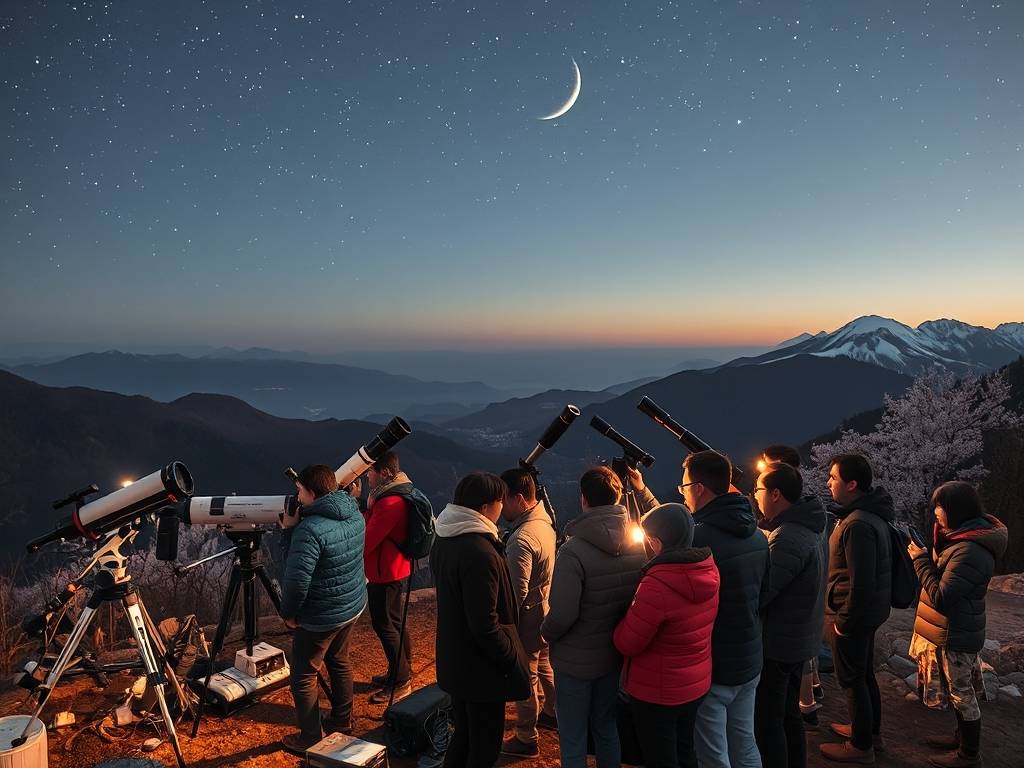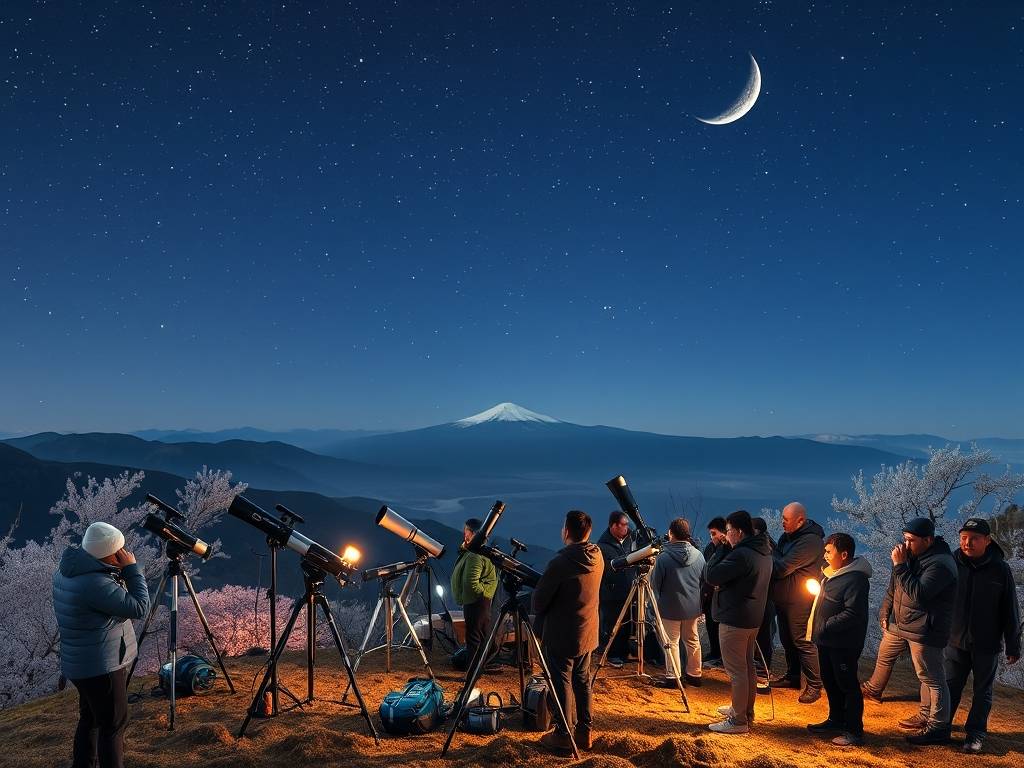Japan Travel
Japan’s Mountain Star Gazing Gear Reviews: Read About Telescope Tools
Starry Nights in the Land of the Rising Sun: Your Guide to Japan's Best Telescope Gear
There's something uniquely magical about gazing at the stars from the slopes of a Japanese mountain. Far from the neon glow of Tokyo or Osaka, the crisp, thin air at high altitudes offers a window to the cosmos so clear it feels like you could reach out and touch the Milky Way. Whether you're on the sacred trails of Mount Fuji, the volcanic landscapes of Hokkaido, or the serene peaks of the Japanese Alps, the celestial show is breathtaking. But to truly unlock these celestial wonders, you need the right partner: a reliable telescope. Navigating the world of astronomy equipment can be daunting, which is why we've compiled this comprehensive review of telescope tools, perfect for your next Japanese mountain stargazing adventure.
The unique conditions of mountain stargazing in Japan demand specific gear. It’s not just about power; it's about portability, durability, and ease of use in a cool, sometimes unpredictable environment. The right equipment doesn't just show you the stars; it transforms your experience from a simple look-up into a profound journey across the galaxy.

Portability Meets Power: The Travel-Friendly Telescope
For any mountain excursion, your telescope's weight and size are the first considerations. You're not setting up in your backyard; you're hiking to find that perfect, light-pollution-free spot.
-
Top Pick: The Celestron Starsense Explorer LT 114AZ. This telescope is a game-changer for amateur astronomers on the move. Its relatively lightweight design and manageable tube make it a perfect companion for a hike. The real star, however, is the Starsense technology. By using your smartphone, it automatically aligns itself and guides you to thousands of celestial objects. After a long day of hiking, when you're tired and the cold is setting in, not having to fuss with complex alignment procedures is an absolute blessing. It’s one of the best portable telescopes for mountain hiking we’ve tested, brilliantly balancing aperture size and weight for travel.
-
The Enthusiast's Choice: Sky-Watcher Skymax 127 Virtuoso GTi. If you're aiming for detailed views of the moon's craters or the rings of Saturn, a Maksutov-Cassegrain design like this is ideal. Its compact, squat tube packs a powerful punch in a very small package. The built-in GOTO Wi-Fi feature allows you to control it from your phone, making it incredibly user-friendly. This is an excellent tool for those seeking high-performance compact telescopes for astrophotography beginners who want to dabble in capturing the Japanese night sky.

The Heart of the System: Aperture and Mounts
A telescope is more than just a tube; its mount is its foundation, especially on uneven mountain terrain.
-
Aperture is King: In astronomy, the diameter of the main lens or mirror (the aperture) is crucial. It determines how much light your telescope can gather. More light means brighter, clearer, and more detailed images. For deep-sky objects like the Andromeda Galaxy or the Orion Nebula, visible from Japan's dark mountains, a larger aperture (like the 114mm on the Celestron) will make a world of difference compared to a smaller, department-store telescope. When reading Japan astronomy equipment reviews, always pay close attention to the aperture specification.
-
Stability on the Slopes: Alt-Azimuth vs. Equatorial Mounts. For beginners, an Alt-Azimuth mount (which moves up-down and left-right) is the most intuitive and generally lighter. The mounts on the Celestron LT and the Sky-Watcher Virtuoso are great examples—they are quick to set up and perfect for visual observation. For those serious about long-exposure mountain stargazing in Japan with telescopes, an equatorial mount, which tracks the stars' rotation by moving on a single axis, is essential. However, they are heavier and have a steeper learning curve. For most recreational stargazers on a mountain, a sturdy Alt-Azimuth or a computerized GOTO mount is the perfect compromise.
Essential Telescope Accessories for a Perfect Night
Your telescope is the main event, but the supporting cast of accessories will make or break your stargazing session.
-
Eyepieces: Your telescope likely came with one or two basic eyepieces. Investing in a good-quality eyepiece with a wide field of view, like a 25mm or 15mm Plössl, will dramatically improve your comfort and the immersive feeling of the cosmos. This is a critical telescope buying guide for stargazing in Asia tip – a good eyepiece is often a better upgrade than a more expensive telescope.
-
Red Flashlight: This is non-negotiable. A red light preserves your night vision, which can take up to 30 minutes to fully adjust. Using a white light will reset your eyes and ruin your ability to see faint deep-sky objects. It’s a simple, cheap tool that is absolutely vital.
-
Power Solutions: Computerized telescopes need power. For a multi-night trip, a portable power bank is a lifesaver. Look for a high-capacity model that can reliably power your mount throughout the night. This is a key piece of essential telescope accessories for travel that many first-timers forget.
-
Star Charts and Apps: While apps like Stellarium are fantastic, having a physical, waterproof star chart of the Northern Hemisphere as a backup is a smart move. It doesn't run out of batteries and can help you learn the sky more organically.
Caring for Your Gear in the Japanese Wilderness
The mountain environment is beautiful but demanding. Condensation can form on your telescope's lens as temperatures drop. Allowing it to acclimatize slowly and using a simple lens cap until you're ready to observe can help. A soft cloth for gently wiping away any moisture is essential. Furthermore, always pack your gear away in its protective case to prevent dust, moisture, and bumps during your descent. Proper telescope maintenance tips for outdoor use will ensure your instrument provides joy for many stargazing seasons to come.
Making Your Choice: Aligning Gear with Your Goals
Before you click "buy," ask yourself what you most want to see.
- The Lunar and Planetary Enthusiast: If the moon’s seas and Jupiter’s moons call to you, look for a telescope with a longer focal length and higher magnification potential, like the Sky-Watcher Skymax.
- The Deep-Sky Adventurer: If your dream is to hunt for faint galaxies and glowing nebulae from a dark mountain peak, prioritize a telescope with the largest aperture you can comfortably carry, like the Celestron, to gather as much light as possible.
- The Absolute Beginner: Your priority should be ease of use and quick setup. A user-friendly telescope for amateur astronomers in Japan with simple controls and helpful technology, such as the Starsense Explorer series, will prevent frustration and let you focus on the wonder.
In conclusion, the journey to find the perfect telescope for your Japanese mountain stargazing trip is all about finding a balance. Balance between power and portability, between sophisticated features and simple joy. The celestial treasures waiting above the clouds of Japan are immense, from the silent glide of a satellite to the dusty arms of a distant galaxy. With the right telescope tools by your side, carefully chosen and lovingly maintained, you won't just be looking at the stars. You'll be connecting with them, creating memories under the vast, beautiful canopy of the night that will last a lifetime. So pack your gear, charge your power bank, and get ready for an unforgettable encounter with the universe.
相关文章
- Kyoto’s Traditional Shopping Gear Reviews: Read About Shopper Tools
- Japan’s Budget Accommodation Gear Reviews: Read About Travel Equipment
- Tokyo’s Transportation Gear Reviews: Read About Commuter Tools
- Japan’s Traditional Tea Ceremony Gear Reviews: Read About Tea Tools
- Japan’s Summer Surf Gear Reviews: Read About Beach Equipment
- Kyoto’s Fall Foliage Gear Reviews: Read About Hiking Equipment
- Japan’s Budget Dining Gear Reviews: Read About Food Tools
- Tokyo’s Science Museum Gear Reviews: Read About Exhibit Tools
- Japan’s Island Family Beach Gear Reviews: Read About Kid Equipment
- Japan’s Winter New Year’s Gear Reviews: Read About Celebration Tools
发表评论
评论列表
- 这篇文章还没有收到评论,赶紧来抢沙发吧~


